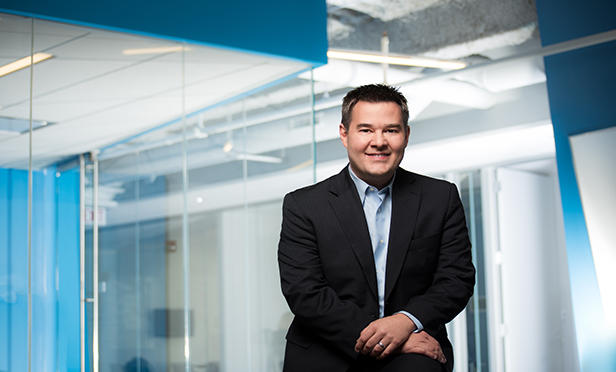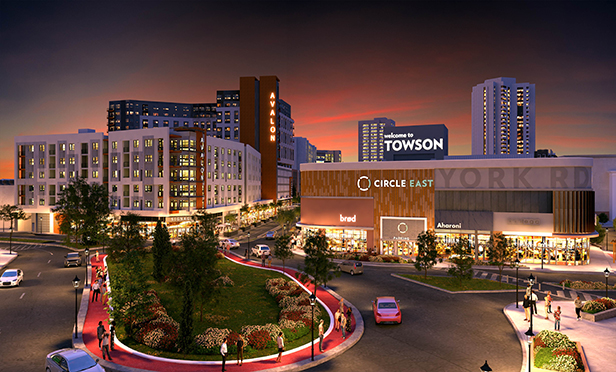 Local teams “have grown up in their respective markets, both professionally and personally,” says Beverly. “They know the relevant players and have relationships as well with the landlords, developers and the local municipalities.”
Local teams “have grown up in their respective markets, both professionally and personally,” says Beverly. “They know the relevant players and have relationships as well with the landlords, developers and the local municipalities.”
OAK BROOK, IL–In the old days, that is, prior to 2013, RPAI lumbered under a sprawling portfolio spread over 82 US markets. Now, the company is focused on its core 10 markets located in high growth cities and its robust redevelopment pipeline of mixed-use projects with an emphasis on community integration and providing a unique experience with retailers who “get it.”
It’s apparent that this focused approach is producing real results. According to RPAI’s recent Investor Day presentation, the REIT’s aggregate base rent has increased five dollars per square foot over the past five years, outpacing market conditions.
According to Matt Beverly, president of RPAI’s Eastern division, the portfolio transformation over the past 5 years has allowed the company to position itself to take advantage of the changing retail landscape. “As we’ve seen a shift in retail and the increase of online shopping, we’ve focused more on properties in prime locations offering a unique experience or convenience to highly densified communities. We’re outpacing national averages because properties in low-growth markets and commodity-type retail are no longer part of our portfolio.” In fact, as RPAI cut back in non-core markets and redefined its core product types, the portfolio composition of mixed-use, lifestyle and community centers increased from 50 percent to nearly 80 percent.
Retail type plays a role in the portfolio’s increased productivity, but so do other factors, he says, such as boots-on-the-ground portfolio management, a claim virtually all of its competition can claim. “There was no way we could effectively manage the old portfolio the way we envisioned with a local focus,” he says frankly. “When we went public, our thesis was to combine our local teams’ expertise with our strong, more concentrated, national platform.”
Trimming to its core markets made that local expertise doable from both a daily management and strategic support perspective. The local teams “have grown up in their respective markets, both professionally and personally,” says Beverly. “They know the relevant players and have relationships with landlords, developers and the local municipalities. The synergies between our national platform and our local teams allow us to make better decisions more quickly regarding remerchandising and community integration.”
Which brings us to the subject of tenanting. Nearly 25 percent of a typical RPAI tenant mix is geared to some form of entertainment, venues not just to bring people in, but to bring the community together–restaurants or movie theaters and fitness centers. “We put our leasing strategies together with a blend of local and regional retailers and restaurants so the local community can identify with the project itself.” And, of course, that mix creates the much-touted live/work/play aspect of good community retail.
The REIT’s most successful tenants are omnichannel for obvious reasons in the web era, but they also have a healthy awareness of outreach. “A unique tenant lineup with a merchandising mix tailored to the local community provides optimum traffic and keeps the center top-of-mind with the local community,” says Beverly. “Our retailers are also taking it a step further, sponsoring such activities as movies in the park, weekend festivals and wellness runs and programs.”
Of course, community engagement isn’t left solely to the retailers. Building a supportive community is also part of the RPAI master plan–literally, as two current projects indicate. Circle East in Towson, MD (a Baltimore suburb) promises a 95,000-square-foot theater, 124,000 feet of additional retail, restaurants and office and some 370 multifamily units above the retail.
 Nearly 25 percent of a typical RPAI tenant mix, such as at Circle East, is geared to some form of entertainment, venues not just to bring people in, but to bring the community together.
Nearly 25 percent of a typical RPAI tenant mix, such as at Circle East, is geared to some form of entertainment, venues not just to bring people in, but to bring the community together.
Even more ambitious, Carillon in Largo, MD, some 60 miles south of Towson, is a multi-phase master-planned community that will ultimately feature a teaching hospital of 600 beds and 200,000 feet of medical office, in addition to its 250,000 square feet of retail and units for 3,000 potential shoppers. Circle East is anticipated to open in Q4 of 2020, while Carillon Phase I is scheduled to open in 2021.
 As Beverly explains, there’s some $400 million in redevelopment and expansion projects starting in 2019. In all projects, he concludes, the essential thesis remains: “We’re not building just retail centers. We’re creating gathering places within the community.”
As Beverly explains, there’s some $400 million in redevelopment and expansion projects starting in 2019. In all projects, he concludes, the essential thesis remains: “We’re not building just retail centers. We’re creating gathering places within the community.”

















 Copyright © 2024 ALM Global, LLC. All Rights Reserved.
Copyright © 2024 ALM Global, LLC. All Rights Reserved.